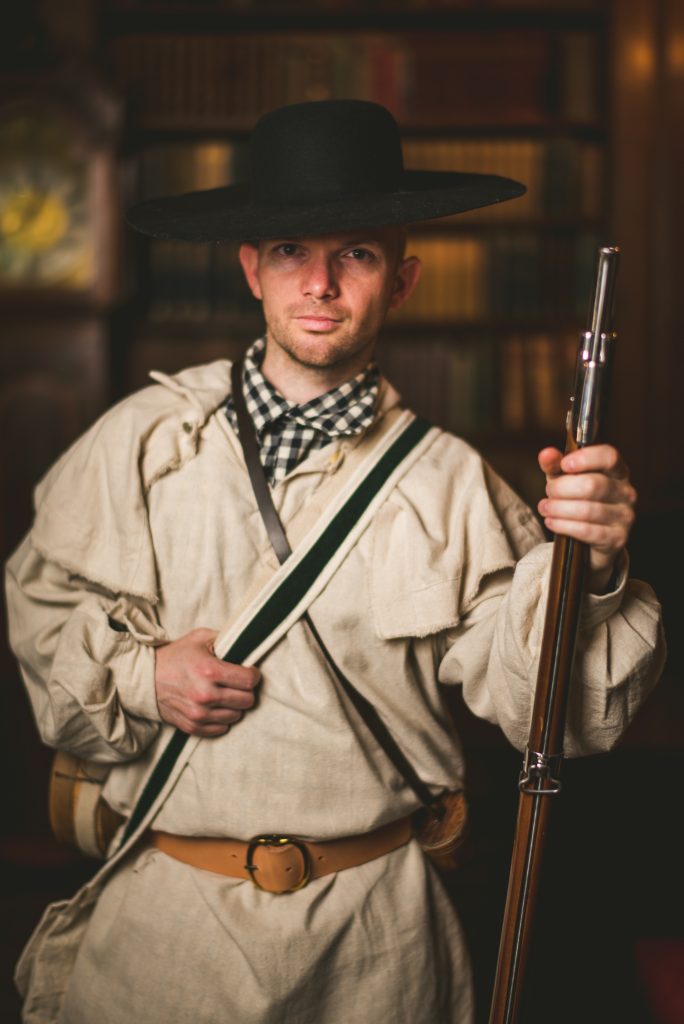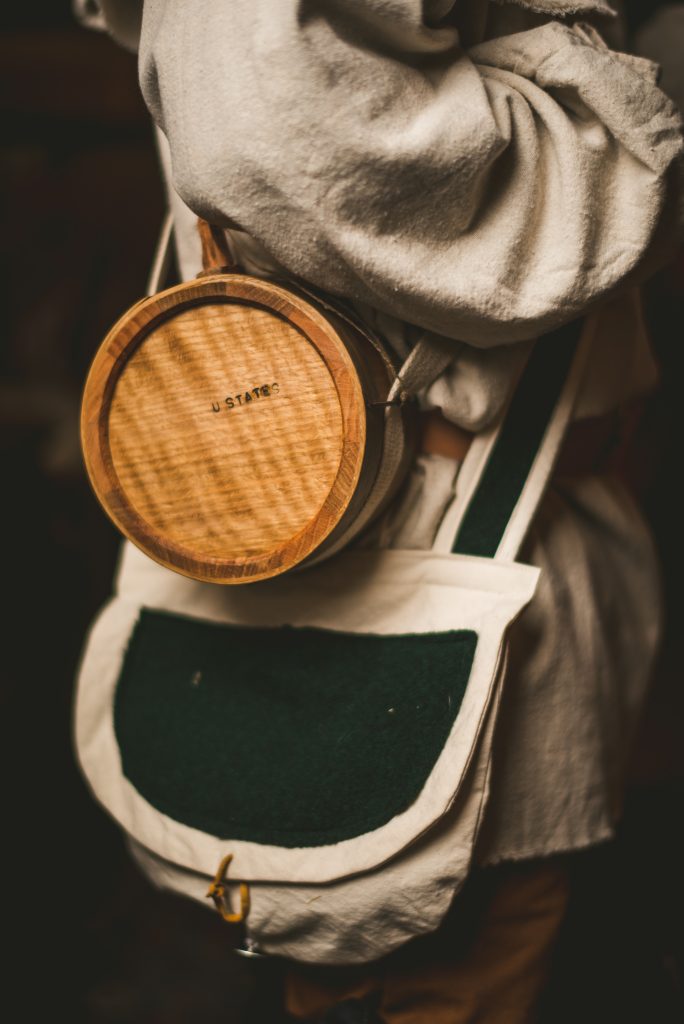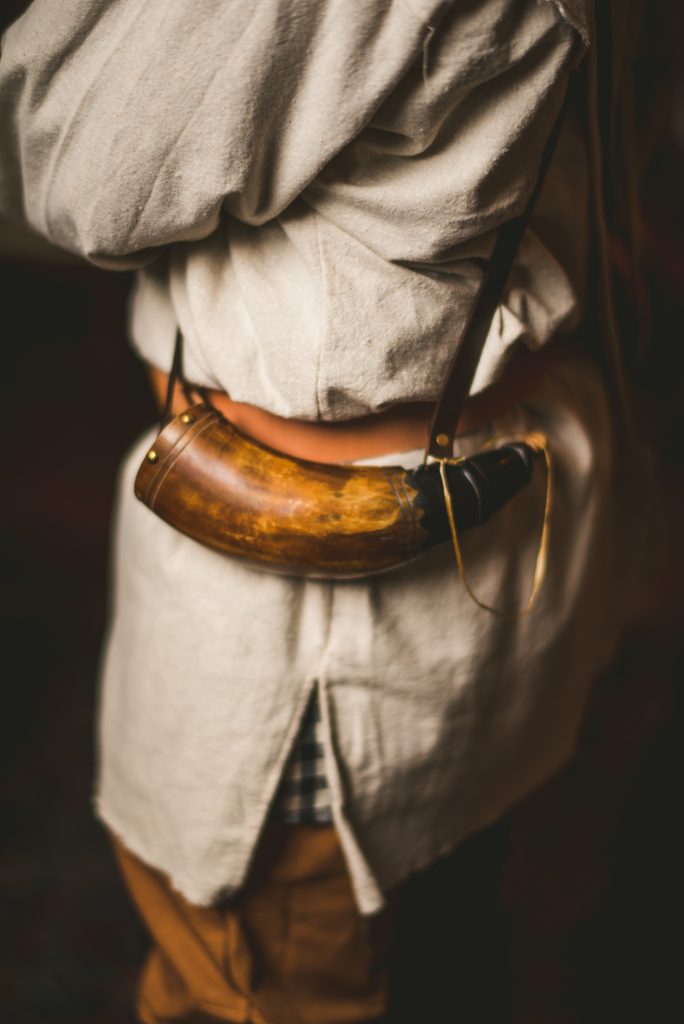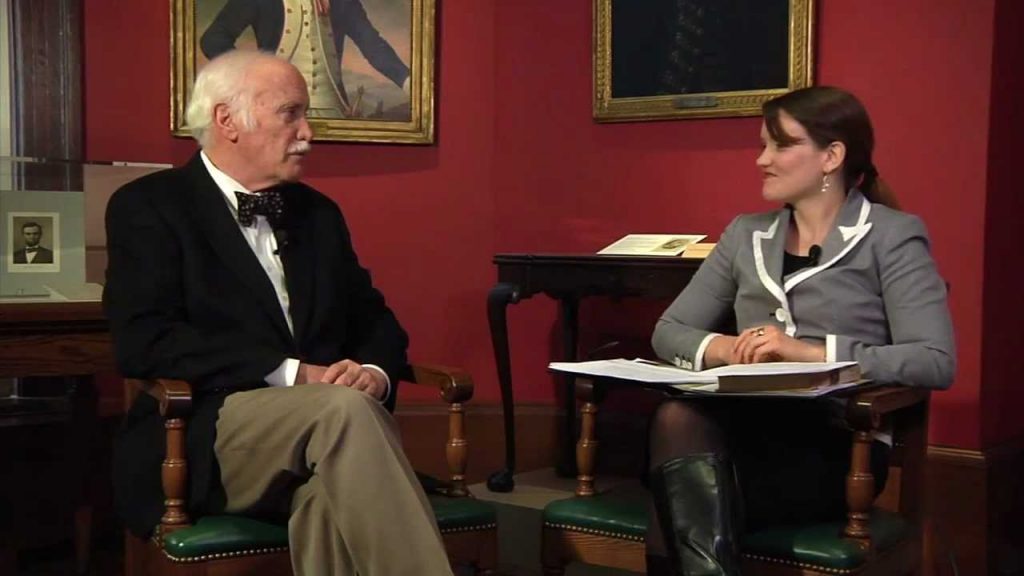Frontier Riflemen in the American Revolution
Riflemen reflected the independence of the American backcountry. They were accustomed to living in sparsely populated regions with wooden and mountainous terrain. A key tool of living in these frontier conditions was the flintlock rifle. With its grooved barrel that allowed for greater range and accuracy, this gun made an ideal precision hunting weapon and an important item for self-defense. Given their self-determining spirit, military discipline was sometimes a problem within the company ranks, earning the attention of Washington himself. Nonetheless, from the woodlands of New England to the South Carolina backcountry, frontier riflemen contributed their unique skillset in the name of American independence.
The First Pennsylvania Rifle Battalion
On June 14, 1775, Congress resolved to raise six companies of expert riflemen from Pennsylvania, Maryland and Virginia. The resolution directed that “each company, as soon as completed, shall march and join the army near Boston.” Five days later, Congress appointed George Washington commander in chief of the Continental Army. Within a month, Washington and the first rifle companies arrived outside of Boston to join the mostly New England troops besieging the British.
The riflemen were talented sharpshooters. Newspapers reported that in a competition, every member of one company placed shots in a seven-inch target at 250 yards and a Virginia marksman fired eight successive shots through a 5 x 7-inch board at 60 yards. More newspapers published such stories and news of these crack shots spread throughout North America and England. Sometimes riflemen fired at enemy officers. British and Hessian officers were known to cut the rank insignia from their uniforms to avoid a rifleman’s aim.
Reproduction Clothing and Equipment
The Continental Army Trunk includes clothing representing a rifleman from the First Pennsylvania Rifle Battalion. The rifleman’s clothing displays his frontier origins. He wears a hunting shirt made of homespun cloth that allowed for free movement. General Washington considered it the ideal military garment. Underneath his hunting shirt he wears a checked work shirt and over it he wears a belt. He also wears colored leggings over breeches and stockings. He wears a wide-brimmed hat and carries a haversack, a canteen and a powder horn.
Additional Lesson Plans and Links
“The Fight for Independence: A View from the Front Lines”
“Perspective, Place and Propaganda in Revolutionary South Carolina”
Battle of Camden, Francis Marion and Guerrilla Warfare and Battle of Cowpens
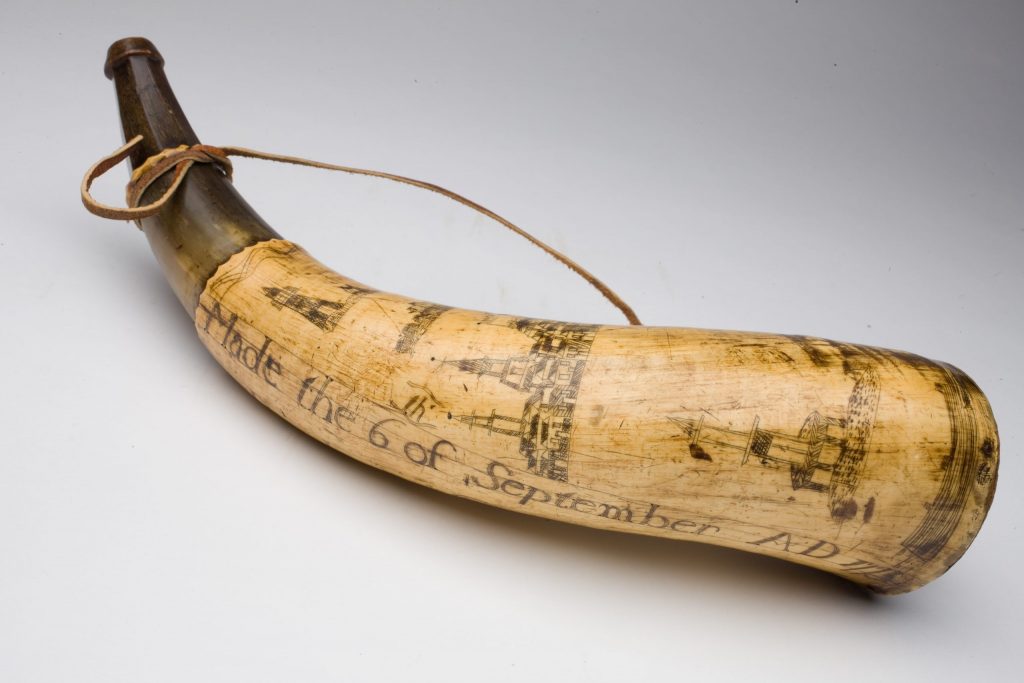
Powder horn owned by Thomas Kempton
United States of America, Massachusetts
1775The Society of the Cincinnati, Gift of John Sanderson du Mont, New York State Society of the Cincinnati, 1994
Engraved powder horn made by an unidentified professional carver for Thomas Kempton (1740-1806) of Massachusetts during the Siege of Boston in 1775. Scenes of Roxbury and Boston are engraved on the horn, including the Boston lighthouse, a fort flying the British flag (likely Castle William on an island in the harbor), Boston Neck, and buildings and barracks in Roxbury, including a meetinghouse. Inscribed in three rows: "Made the 6th of September AD 1775 / at Roxbury Camp for Captain / Thomas Kempton." On one end, the horn has a beveled spout with a fluted carved collar and a pegged plug (plug not present), and on the other end it is capped with a circular piece of wood nailed to the sides of the horn.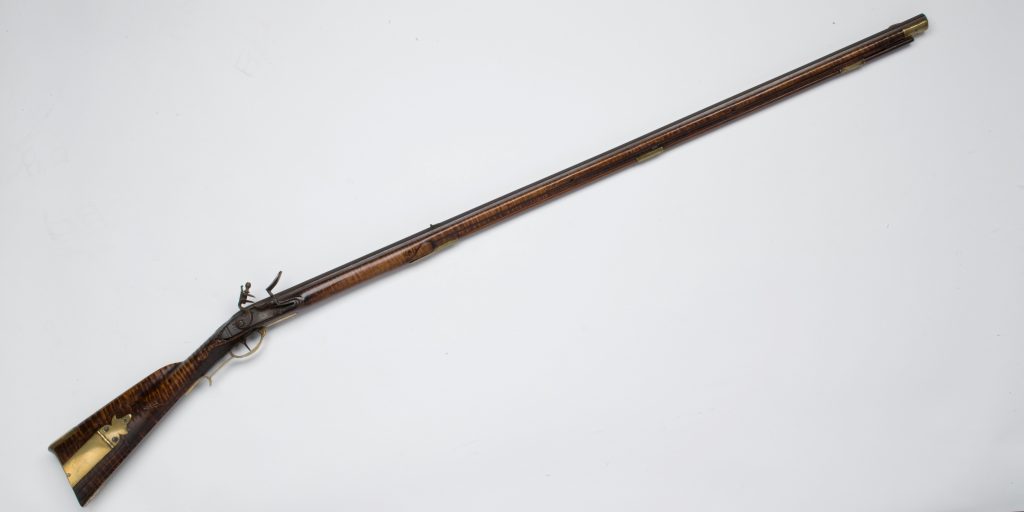
Pennsylvania long rifle
Possibly Reading, Pa.
ca. 1780-1790The Society of the Cincinnati, Gift of John Sanderson du Mont, New York State Society of the Cincinnati, 1994
The most iconic weapon manufactured in America during the Revolution is the long rifle, a slender, lightweight firearm designed for hunting and protection in the wooded, mountainous terrain of the western frontier. The rifle was revered for its accuracy over long distances, but limitations prevented it from being as widely used in wartime as the smoothbore musket. The American long rifle evolved from the German jaeger rifle, which accompanied German immigrants to Pennsylvania and the western frontiers of Maryland, Virginia and the Carolinas. The vast majority of American rifles were produced by independent gun makers in Pennsylvania, especially in the Lancaster region.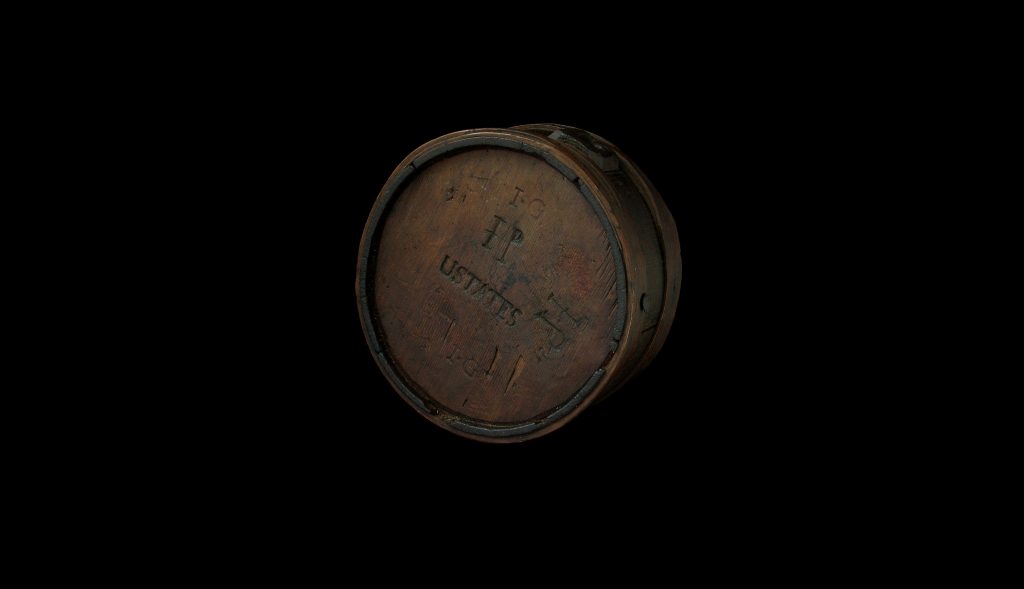
Canteen
American
Late 18th centuryMuseum of the American Revolution
This rare wooden canteen is marked “USTATES,” indicating use by a soldier in the Continental Army. Alarmed by chronic shortfalls in arms and equipment caused in part by thefts and negligence, the Continental Congress directed in February 1777 that all the arms and accouterments belonging to the country should be marked to show ownership by the United States.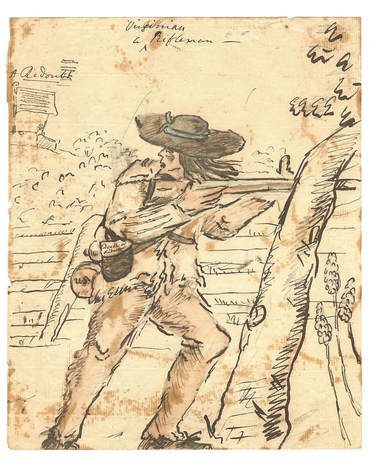
Virginia Rifleman
Richard St. George Mansergh St. George
1777Harlan Crow Library
Richard St. George, a British officer serving in America, drew this watercolor of a Virginia Rifleman in 1777. In the image, the soldier's canteen is marked with the letters U.S., which was a common stamp to mark the military equipment purchased with Congressional funds. St. George was a lieutenant in the 52d Regiment of Foot, wounded at the Battle of Germantown. Image courtesy of Harlan Crow Library, Dallas, Texas.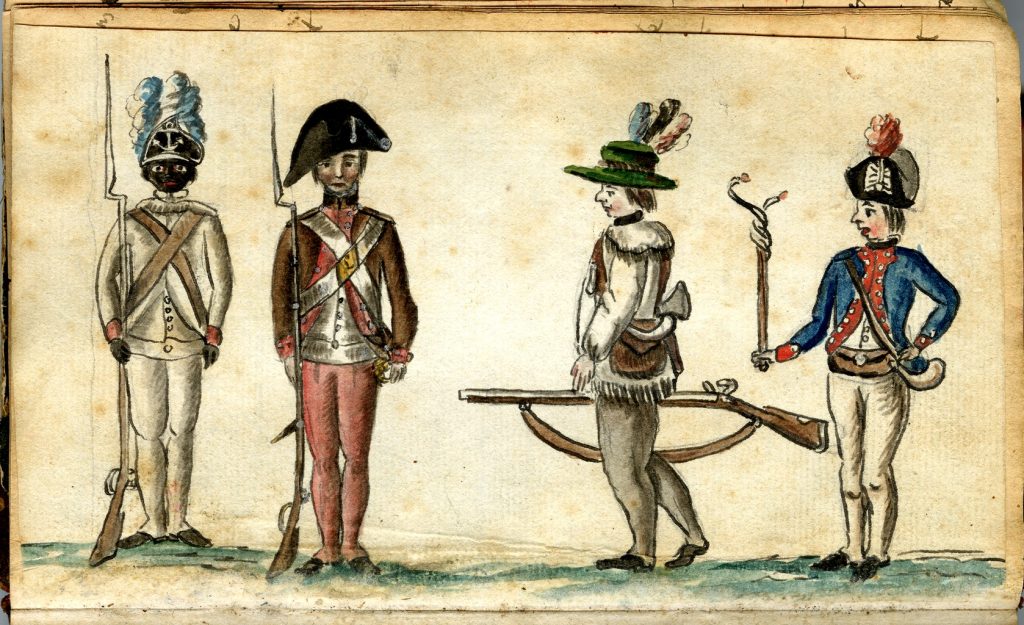
Soldiers in Uniform, American Rifleman
Jean Baptiste Antoine de Verger
1781Anne S.K. Brown Military Collection, Brown University Library
One of the soldiers illustrated by Verger in 1781 was an American rifleman. The man's clothing reinforces his frontier origins. He wears the signature hunting shirt made of homespun cloth that allowed for greater movement than a tight-fitting military coat. George Washington considered it an ideal military garment. In addition to a wide-brimmed hat, the rifleman also wears a leather haversack and carries a powder horn and a tomahawk.